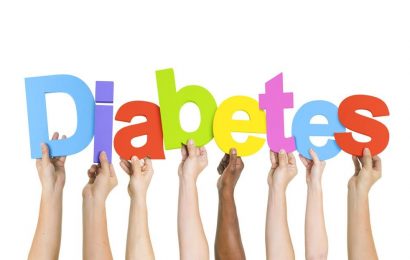Planning ahead makes good sense for anyone with diabetes, but for someone who lives alone, it takes on added importance. When you live alone, for example, you can’t take for granted that someone will be with you – or even come home eventually – to help if you develop hypoglycemia or to get supplies for you if you get sick. Sticking to a meal plan can also be a challenge if you don’t enjoy preparing meals for one. And getting the support you need from others may take more effort if it has to come from outside the home. Nonetheless, people with diabetes can and do manage their diabetes successfully while living alone. If you live alone, here are a few tips to help you deal with these and other challenges.
Safety
Hypoglycemia is a common side effect of diabetes therapy, particularly insulin use, and if you develop moderate or severe hypoglycemia while you are alone, it can be dangerous. Your best tool for preventing hypoglycemia is regular blood glucose monitoring. To get a more complete picture of your blood glucose activity, try varying the times of day you check your blood glucose level. For instance, some days you might check before a meal, and other days you might check one to two hours after a meal. In this way, you can get an idea of how your levels change throughout the day and identify times you might be at risk for hypoglycemia. At least once a month, it is also a good idea to do a blood glucose check in the middle of the night to monitor your sleeping levels.
If you frequently experience hypoglycemia, talk to your doctor. Let him know that you live alone and that preventing hypoglycemia is a priority for you. If you don’t use one already, your doctor may suggest switching to a rapid-acting oral medicine or insulin. The newer, rapid-acting pills and insulins carry less risk of hypoglycemia than the older, slower-acting ones. Also, the new peakless basal insulin analog, insulin glargine (brand name Lantus), may have less risk of hypoglycemia than older, long-acting insulins. Using an insulin pump can also reduce the risk of hypoglycemia as long as basal and bolus doses are calculated correctly. You might also ask your doctor if using a continuous glucose monitoring system would be helpful for you. Such devices can reveal patterns in blood glucose levels that are often missed by regular monitoring.
In general, if you feel you could use more help learning to manage your diabetes, consider making an appointment with a certified diabetes educator who can work with you on monitoring and other diabetes tasks. A diabetes educator may also be able to offer Blood Glucose Awareness Training (BGAT), which helps people with diabetes recognize and interpret symptoms associated with high and low blood glucose levels. Your doctor may be able to recommend an educator, or you can find a list of certified diabetes educators in your area at www.aadenet.org. You can also call the American Association of Diabetes Educators at (800) 832-6874.
In addition to regular blood glucose monitoring, establishing connections with other people can be an important part of maintaining personal safety. Depending on your comfort level, it can be to your advantage to let people near you know that you have diabetes, such as neighbors, friends, or local shopkeepers with whom you have regular contact. You may want to ask a few neighbors if you could call them in the event of a “diabetes emergency.” If they say yes, keep their phone numbers in an accessible place, or program your phone to call them with the press of a button. Consider establishing a buddy system with a network of people who know to check in with you if you are out of contact for a specified period of time. You can give a person you trust an extra key to your house so that someone can gain entry if you are unable to open the door.
If you have special needs, or are otherwise worried about having an emergency in the home, there are many personal emergency response systems (PERS) available. These usually involve a button kept in the home that you press if you are having an emergency, which notifies a response team to come to your house. The Federal Trade Commission (FTC) publishes information on choosing the right PERS, which you can access by visiting their Web site at www.ftc.gov/bcp/conline/pubs/services/pers.htm. You can also call the FTC toll-free at (877) 382-4357.
Ensure that your important medical information is accessible in the event of an emergency. Carry identification that lists your name and medical condition. In addition to your ID, make up a card or sheet that lists the names of your emergency contacts and the name and telephone number of your primary-care doctor. Be sure to let people know that you have listed them as an emergency contact, and give them the name and phone number of your doctor. On the card, list your current medicines (prescription as well as nonprescription) and medical conditions. In addition to carrying this information with you, keep a copy at home, perhaps in an envelope posted on the refrigerator or near the telephone. Some people also choose to prepare an emergency “ready bag” complete with diabetes and emergency supplies in case a quick evacuation from the home is necessary.
Sick days
Being sick is a physical stress on the body that usually causes blood glucose levels to rise, even if you are not eating. This means it’s important to continue taking any insulin or medicine that you usually take (and possibly more, if directed to by your doctor). It is also important to continue monitoring your blood glucose level so you can respond to out-of-range levels and catch any problems before they become major. If your blood glucose levels do seem out of control and you are not sure how to treat the problem, call your health-care provider.
Because managing your diabetes requires certain supplies, and because you will probably not want to go shopping for these supplies when you are sick, it’s a good idea to stock up on sick-day necessities ahead of time, when you are well.
What are these necessities? You will need all the supplies you usually use, such as pills, insulin, syringes or pump supplies, test strips, and lancets. There are also certain food products that are good to have on hand for a sick day, such as bottled water, juice, Jell-O, soup, and other healthy, shelf-stable foods that are palatable when you’re sick. Other items that may be useful to have on hand include antinausea drugs such as Pepto-Bismol or the prescription drug prochlorperazine (Compazine), which comes as a suppository; antidiarrheal remedies such as Imodium A-D or the prescription medicine diphenoxylate and atropine (Lomotil); regular soda or Gatorade with sugar; ketone testing supplies, particularly for people with Type 1 diabetes; and glucagon, which is not made to be self-administered but is still recommended for people who live alone.
When you are sick, you don’t want to be searching around your house for important phone numbers, so keep a list of all the phone numbers you might need in a place where you can find it easily. These phone numbers might include your doctors, neighbors, local emergency services, or your medical insurance company. If you have home-delivery grocery stores or pharmacies in your area, make a note of these phone numbers as well.
Signs indicating that you need to seek help immediately include persistent vomiting or diarrhea, moderate to high ketone levels, high blood glucose (over 300 mg/dl) that doesn’t respond to treatment, sleepiness and confusion, shortness of breath, or losing more than three pounds in a 24-hour period.
Shopping and cooking for one
Grocery shopping for one often involves deciding between buying a larger package or amount of food, some of which may go bad before it all gets eaten, and buying individually portioned foods, which are often more expensive than larger portions. Cooking involves a similar dilemma: Do you make one portion of food at a time, which often takes as much time and effort as making several portions? Or do you make larger recipes, then refrigerate or freeze portions you don’t eat immediately? Each approach has its pros and cons.
Buying in bulk can make economical sense when you choose foods that won’t go bad quickly. Vegetables like beets, cabbage, carrots, celery, potatoes, and winter squash keep well for more than a week. Nonfat dry milk and dry buttermilk are an option for cooking, because they are shelf-stable for long periods of time. Buying bags of frozen fruits and vegetables allows you to remove the portion you want and store the rest in the freezer with no spoilage.
If you buy a larger amount of food, you also have the option of cooking several portions at one time and freezing the leftovers for a later date. This will give you a few easy stand-by meals that can be quickly reheated when you are too rushed or tired to cook. Breads, soups, and stews freeze well, for instance. Wrap individual portions in plastic wrap or bags, or put them in plastic food storage containers.
Buying individual portions may make more sense if you’re buying fruits, vegetables, and other foods that don’t last very long in the cupboard or refrigerator and don’t freeze well. Additionally, if you don’t like eating leftovers or don’t have the appliances necessary for long-term freezing and quick reheating, individual portions that can be finished off in one sitting without waste may make more sense.
Meals tend to be more enjoyable when eaten at a relaxed pace in a comfortable environment. If you get little pleasure from your meals alone, think about what would make them more enjoyable. Would a tablecloth help? Flowers or candles? How about putting on some music while you eat? A meal alone can be more than something to be rushed through.
Exercise
Regular exercise is recommended for just about everyone with diabetes, and its effects are almost exclusively beneficial – as long as certain safety precautions are observed. Exercise can lead to hypoglycemia, which is why it’s a good idea to check your blood glucose level before, after, and sometimes during exercise. It’s also a good idea to have some glucose tablets or a small snack on hand while you exercise in case your blood glucose level gets low. Since hypoglycemia can occur even hours after you’ve finished exercising, particularly if your workout was long or vigorous, monitoring your blood glucose later in the day is important, too.
Whether you exercise alone or with other people, wear visible medical identification (such as a necklace or bracelet) when you exercise in case you have an emergency that prevents you from relaying information about your diabetes or other medical conditions. If you go for walks, go jogging, or go cycling alone, leave a note on your refrigerator saying where you went and what time you left. If you plan to go camping or take some other overnight trip, tell a friend about your plans so there is someone who knows where you are and when to expect you back.
Of course, living alone doesn’t mean you have to exercise alone. Many people enjoy exercise more with a partner or group, either in a class setting, on organized walks or hikes, or just informally. If you take an exercise class or work out at a gym or fitness center, you may want to tell your instructor or the gym manager that you have diabetes and that there’s a possibility you will experience hypoglycemia. Let that person know how you normally handle the situation.
Getting support
The stereotypical view of people who live alone is that they’re lonely and depressed. While some no doubt are, many are not. Some people are quite content to live alone. However, no matter which camp you fall in, it’s important to remember that sadness and loneliness are not the same as depression. Sadness is a feeling, while depression is a treatable illness. Some symptoms of depression include sadness or anxiety, feelings of emptiness, loss of interest in ordinary activities, decreased energy, fatigue, sleep problems (insomnia, oversleeping), eating problems (loss of appetite, overeating), difficulty concentrating or remembering, inappropriate feelings of guilt or worthlessness, irritability, recurring aches and pain, and thoughts of death or suicide. If these symptoms last for two weeks, seek help from your primary-care doctor or a mental health professional.
Even if you’re not depressed, you may feel lonely or wish you had more support from others in coping with your diabetes. How you go about it will depend on what feels comfortable to you, but it is possible to make new social contacts, deepen your relationships with people you already know, and meet others with diabetes who can sympathize with you and offer both practical and emotional support. Just because you don’t live with your family doesn’t mean you can’t keep in touch and have a close relationship with them. Spending time communicating with your family or friends over the phone or with e-mail can take as much or as little time as you want, and it may help you feel less lonely and more supported.
Joining a diabetes support group, whether in person or online, will put you in touch with people who are facing some of the same issues that you are. Support groups can help people with diabetes adapt to the diagnosis, cope with complications, and learn to manage the disease more effectively. If you participate in an online chat or forum, for safety’s sake, do not use your real name and do not reveal your phone number or address.
You may also be interested in attending a diabetes class instead of or in addition to a support group. Learning more about diabetes and developing self-management skills can make dealing with many challenges much easier. Diabetes education programs are available in many parts of the country, and Medicare and most insurance companies will cover part of the cost of attending them. To find information on support groups and education programs in your area, you can check the American Diabetes Association (ADA) Web site, http://diabetes.org (click on Community Programs & Local Events), or call the ADA at (800) 342-2383. Another resource is the Juvenile Diabetes Research Foundation’s Online Support team, which consists of volunteers from around the country who are available to personally answer your questions and concerns about diabetes and provide support. Visit the Web site www.jdrf.org to learn more.
Additional resources
Living alone with diabetes may present certain challenges, but there are resources and tools at your disposal to help you live safely and healthfully. Please click here to find out more.





